Connecting Across Campuses: Collaboration Exposes Oberlin Students to Makerspace Culture
October 28, 2019
Amanda Nagy
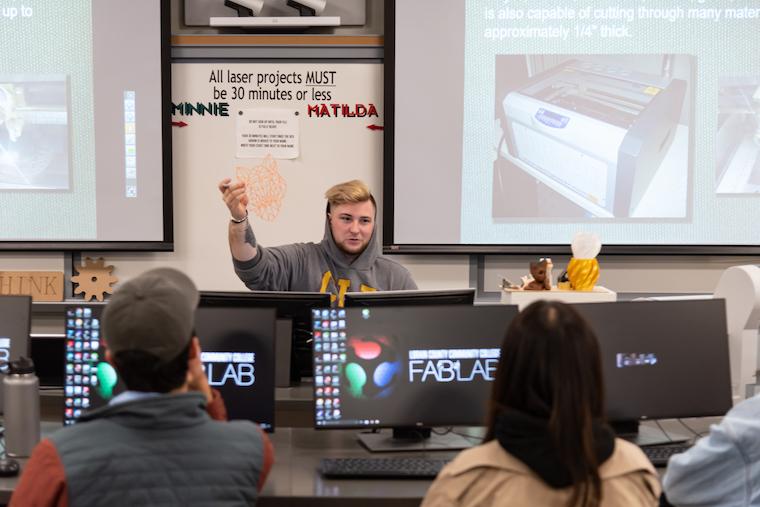
Oberlin students visit the Campana Center for Ideation and Invention at Lorain County Community College in October.
Makerspace learning meets liberal arts as Oberlin joins forces with Lorain County Community College.
A collaboration that began this fall is encouraging shared problem solving and dialogue between students at Oberlin and nearby Lorain County Community College (LCCC).
Oberlin was awarded a Multi-Institutional Innovation Grant from Bringing Theory to Practice to carry out a partnership between the Oberlin Center for Convergence (StudiOC) and the Campana Center for Ideation and Invention at LCCC. The project, “4D Liberal Arts,” brings together two different learning populations to explore the history and future of technology through cross-disciplinary curricula and applied, hands-on activities that connect theory and practice.
The Campana Center Fab Lab at LCCC is the second in the country, modeled after the program at MIT. The lab features 3-D printing, laser cutting, and CNC machine routing, with a staff of experts who can guide users in each of the tools and equipment. Oberlin’s StudiOC is a curricular program that aims to equip students with the intellectual skills to address the complex, seemingly intractable problems of our era through cross-disciplinary dialogue. The Campana Center and StudiOC have a shared commitment to testing new curricular and educational models. The partnership exposes Oberlin students to makerspace education and provides opportunities to think critically and engage with materials, while LCCC students benefit from a liberal arts and humanities approach to studying topics by examining them in a historical, cultural, and ethical contexts.
By partnering makerspace learning with cross-disciplinary liberal arts, students from both institutions collaborate to explore problems—particularly technology-driven change—from different angles.
The fourth dimension
The project’s title evokes both speculation of a fourth dimension and 4-D (shape-morphing) printing, which is considered the next frontier in digital fabrication, explains Associate Dean of the College of Arts and Sciences Laura Baudot. “It captures what is innovative and potentially transformative about this model of collaboration between a private residential liberal arts college and a community college. Oberlin and LCCC have complementary needs and strengths. What kind of positive social transformation can happen when Oberlin and LCCC share resources and bring their very different student populations together to explore, in theoretical and hands-on ways, new technology and its implications for the future of work, social interactions, and embodied experience?”
Cross-disciplinary partnerships
Fall 2019 course partnerships include:
- A “Correspondence Across Campus” project with Wendy Kozol, professor of comparative American studies, and Kim Karshner, professor of English at LCCC, with support from Ed Vermue, head of special collections at Oberlin. Students in this course are trading hand-made postcards with pre-assigned prompts designed and printed in Oberlin’s letterpress studio. Karshner’s fiction students are using the letterpress studio and special collections to study the history of book design. Through workshops, students are thinking about how the written word is changed with graphics and other design elements.
- Assistant Professor of Creative Writing Emily Barton’s advanced creative writing students are completing exercises in writing about real-world people they know and admire. The class is working with Fab Lab instructor Ryan Coorigan to create fabric silhouettes of their subjects. The fabric is dipped in resin and allowed to harden so it can be mounted.
- In the StudiOC course cluster Recasting Innovation, offered by Barton, Associate Professor of History Ellen Wurtzel, and Visiting Assistant Professor of Dance Holly Handman-Lopez, students are creating full or partial body or face casts in plaster and using materials from the Fab Lab to build a piece that reflects their thinking and engagement with physicality.
- Students in the Reimagining Maker Cultures cluster, taught by TIMARA Lecturer Abby Aresty and Associate Professor of Anthropology Amy Margaris, are visiting the Fab Lab to think about design and disability and designing their own prosthetic listening devices.
- Handman-Lopez and Gregory Little, associate professor of Art at LCCC, are collaborating on a project at the intersection of choreography and technology. Little’s 3-D animation students are visiting Oberlin to join Lopez’s choreography students in experimenting with a range of low-tech motion capture technologies, primarily the Google Tilt Brush application.
Making the most of makerspace
Aresty says the Fab Lab is an important resource open to the community that not enough people know about. “The first time I went there was on my own to make labels for the studio, but I quickly started collaborating with them on other projects,” Aresty says. “That type of interdisciplinary environment is very much in sync with the incredible collaborations that come out of StudiOC, where you’re looking at themes from different disciplinary perspectives. You’re able to bring these concepts to life in an incredible way. The fact that this is the second Fab Lab in the nation and less than 30 minutes away from us in pretty amazing. All of the Oberlin students that I know who have found their way there have been super excited to discover those resources.”
First-year Hannah Humphrey, a student in Kozol’s “Justice in America?” first-year seminar, has enjoyed engaging with LCCC students through the postcard project, which she says has helped dismantle assumptions about both schools. The assignment was to create a postcard in the context of mail art that in some way described themselves or some type of self-expression. Students could respond to each other in writing only but choose to add some type of visual element.
“I decided to take a bunch of photos that were representative of me or influenced me and paste them on the card. It was cool to hear from students at the LCCC because I used to attend Lakeland Community College in my hometown of Eastlake, Ohio,” Humphrey says. “There is a stigma around going to community college, while at the same time we put private school up on a pedestal. I think programs like this are important for connecting across that divide,” says Humphrey, an intended math and political science double major.
Meredith Warden, also a first-year, learned that LCCC has a diversity in terms of students’ age and reasons for pursuing a degree.
“The postcard project is a great way to connect Oberlin students with the broader community in Lorain County,” says Warden, who is from Pittsburgh, Pennsylvania. “This experience has been valuable, especially for Oberlin students coming from different backgrounds.”
LCCC’s Karshner envisioned the postcard project as a way to bridge the two campuses.
“When we made our field trip to the letterpress studio, I was surprised to learn that only one of my students had been to Oberlin before,” Karshner says. “I think the value for my students is to know that coming to Oberlin College might be a possibility for them in the future, and I think both campuses have valuable resources to share.”
View the Flickr album for photos of the 4D Collaboration workshops.
Photo Gallery
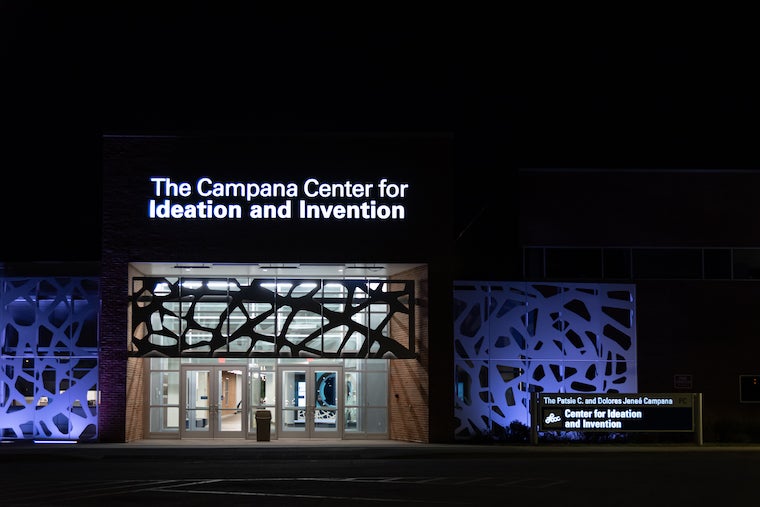
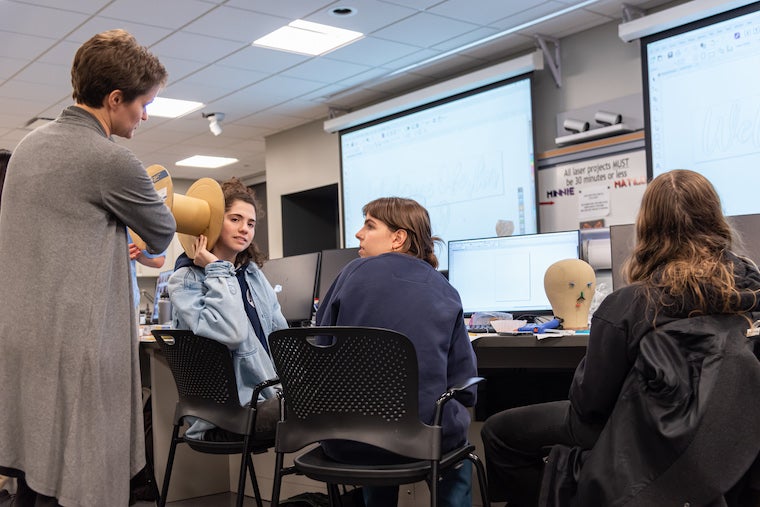
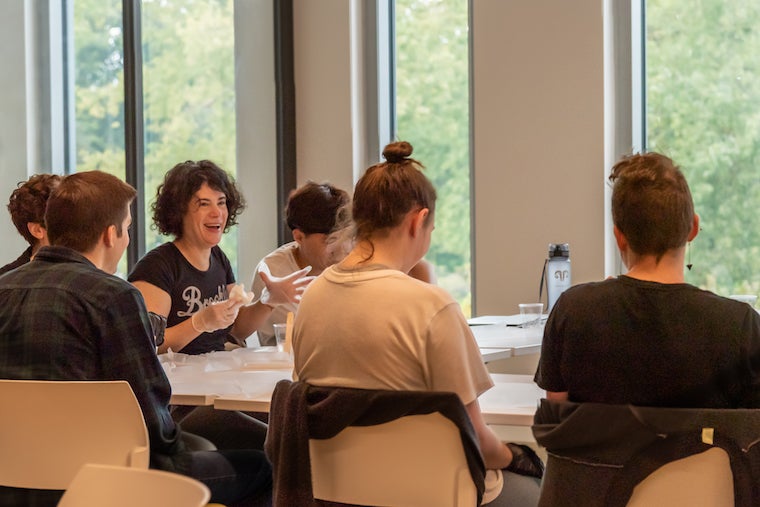
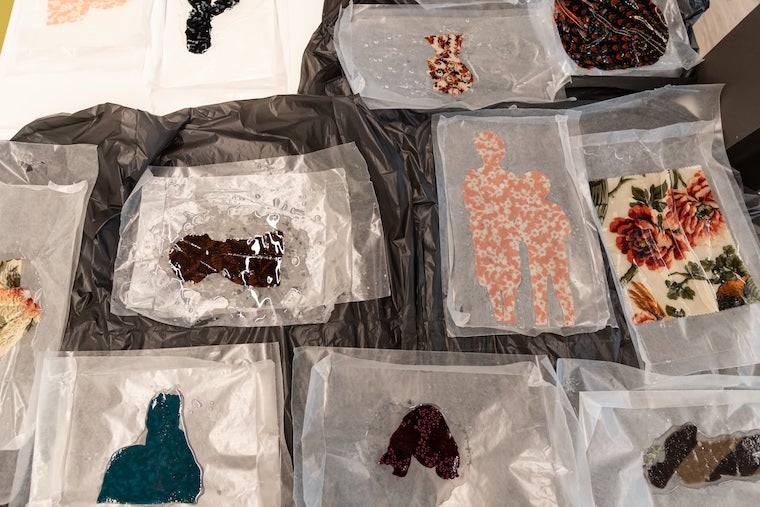
You may also like…
Josh Nolan Named Vice President, General Counsel, and Secretary at Oberlin
Distinguished attorney brings extensive experience in higher education law.
Learning by Teaching: Oberlin Students Share Global Music with Young Learners
College and Conservatory students in PACE 103 prepare local children for an immersive community concert at Oberlin.
Nuiko Wadden ’02 Joins Oberlin Conservatory Faculty as Assistant Professor of Harp
The versatile musician brings extensive opera, orchestral, and contemporary music experience to her role


